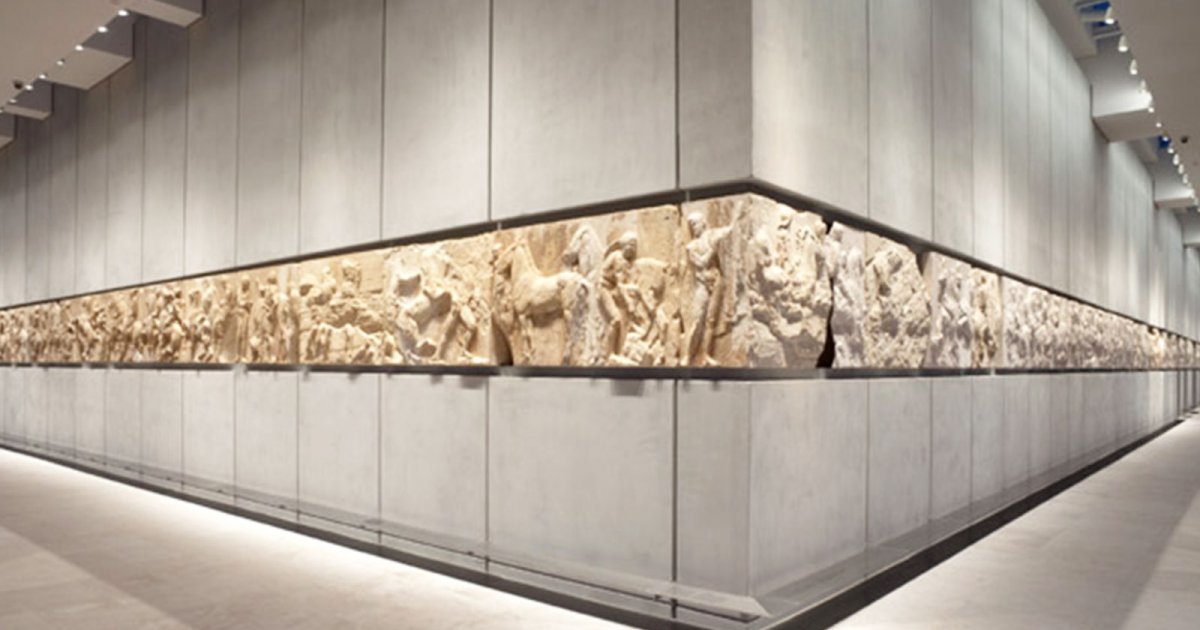ACROPOLIS MUSEUM, Second Floor Parthenon Frieze Second Part
 Language: English / USA
Language: English / USA
Take your time walking round the perimeter to look at this frieze. You’ll see the finest youths of the time advancing towards the door of the sacred temple with an offering to Athena: a peplos woven by young Athenian noblewomen and embroidered with gold thread. Phidias prepared the drawings for the frieze, but he only sculpted some parts of the sequence himself, bringing a sense of human warmth and harmonious rhythm and beauty to the whole work: until then, nothing so beautiful and, at the same time, so natural had ever been seen.
If you follow the movement of the figures, you’ll see there’s a wave running along the frieze that links them, with accelerations and pauses. There’s a smooth rhythm throughout the composition, especially evident in the horse race, where you can observe some marvelous detail in the movement of the animals’ legs and in the youths’ expressions. This is an anthem to the horse and to the eternal appeal of youth.
Men, objects and animals are portrayed with close attention to natural details, without ever being monotonous. And where you can see repetitions – which are never identical – they have the same function as a chorus in a song. Look carefully at the variations, in both the foreground and the background. Look at the movement of their limbs, the direction of their expressions, at how the various characters are connected. This really is a representation of all the citizens of Athens, linked by their participation in the same action, yet with their individual personalities clearly defined.
An interesting fact: you’ll have noticed that all the figures converge towards a single point: if you follow them, you’ll find yourself before the gods. There’s nothing heroic or monumental about them: they are seated in extremely human, natural positions, chatting amongst themselves like friends at a banquet. There’s nothing that distinguishes them from the Athenians converging towards them, except for the fact they’d be taller if they stood up. A perfect, serene harmony is evident between the two, because the Greeks believed that divinity was present in all men.



